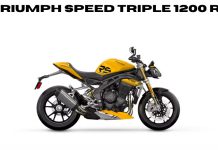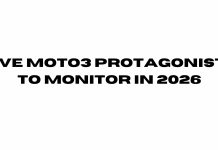Executive Summary
Motorbike theft continues to pose a significant challenge across the United Kingdom, impacting thousands of owners annually. While physical deterrents remain essential, the escalating sophistication of theft operations necessitates advanced technological solutions for effective recovery. This report provides a comprehensive examination of motorbike tracking technologies, their operational effectiveness, practical considerations for owners, and the intricate legal and insurance landscape in the UK.
The analysis reveals that advanced tracking devices, particularly those employing multi-layer technology and professional monitoring, offer exceptionally high recovery rates, with some systems boasting success rates as high as 96-98%.1 This demonstrates that for individual owners who have adopted and effectively utilized these technologies, the likelihood of recovering a stolen motorbike is remarkably high.
However, despite these impressive individual recovery successes, overall national theft figures remain substantial, suggesting a disparity. This indicates that while tracking technology is highly successful post-theft for those who employ it, its widespread adoption or its broader deterrent effect may not yet be sufficient to significantly curb national theft numbers. It also implies that thieves are continuously adapting their methods, requiring even more robust tracking solutions to maintain an advantage.
For optimal security and financial benefit, Thatcham-approved trackers are identified as a critical investment, not only for their proven security features but also for their potential to significantly reduce insurance premiums. Effective deployment of these systems requires meticulous attention to device type, covert installation, and consistent maintenance, including active subscription management. Leveraging the 24/7 monitoring and police liaison services offered by premium tracker providers is paramount for ensuring rapid response and maximizing recovery potential.
Key Takeaways:
- Motorbike theft remains a significant and growing problem in the UK, necessitating robust security measures.
- Advanced tracking devices, particularly those with multi-layer technology and professional monitoring, offer exceptionally high recovery rates (e.g., 96-98%).1
- Thatcham-approved trackers are crucial for both enhanced security and significant insurance premium reductions.3
- Effective tracker deployment requires careful consideration of device type, covert installation, and ongoing maintenance.
- The legal landscape in the UK supports personal vehicle tracking but emphasizes consent and data privacy, especially if the vehicle is shared.5
Top Recommendations:
- Adopt a multi-layered security approach, combining physical deterrents with an advanced, professionally monitored tracker.
- Prioritize Thatcham-approved (S5 or S7) trackers for optimal recovery potential and insurance benefits.3
- Ensure covert installation and consistent maintenance (including subscription payments) to maximize tracker effectiveness.7
- Leverage the 24/7 monitoring and police liaison services offered by premium tracker providers for rapid response.2
Introduction: The Rising Tide of Motorbike Theft and the Tracker Solution
Motorbike theft is a pervasive and escalating concern across the United Kingdom, inflicting significant financial and emotional distress upon owners. Recent industry data underscores the severity of this issue, with 15,832 motorbike thefts recorded in the UK during 2024. London, in particular, witnessed a concerning rise, accounting for 4,434 of these cases, indicating a concentrated problem in the capital despite a slight national decrease from 2023 figures.9 More recent statistics from May 2025 further highlight this trend, reporting a total of 2,079 Powered Two Wheeler (PTW) thefts, which marks a notable increase of 264 from April.10 Certain regions are experiencing particularly sharp increases; for example, Cambridgeshire saw thefts rise from 20 to 39, Nottinghamshire from 38 to 46, West Yorkshire from 55 to 73, and South Yorkshire from 35 to 70—a 100% increase—in May 2025 compared to April. Wales also reported significant surges in Gwent (114%) and Dyfed and Powys (200%). The Metropolitan Police force, covering the highest density theft area, recorded 586 PTW thefts, an increase from 497.10 These figures paint a stark picture of a persistent and geographically concentrated crime wave.
The personal impact of such incidents is vividly illustrated by the experience of Noraly Schoenmaker, widely known as Itchy Boots. While on a UK book tour, her loaned 2025 Yamaha Ténéré 700 was targeted by thieves at a hotel in Swansea, Wales. Despite having a chain lock on the rear wheel, security footage revealed a scout meticulously surveying the bike beforehand, followed by thieves who subsequently dragged the motorcycle away. Crucially, they attempted to conceal the bike under nearby greenery and actively searched for a tracking device. Fortunately, Noraly’s discreetly placed Apple AirTag remained undiscovered, allowing her to locate the bike [User Query]. This incident, while resulting in minor cosmetic damage rather than a complete disappearance, powerfully demonstrates the immediate value of knowing a bike’s location and the potential for recovery, even when thieves employ sophisticated tactics such as pre-theft reconnaissance, overcoming physical security, hiding the vehicle, and actively searching for tracking devices.
The detailed account of the “Itchy Boots” incident offers a critical observation: the evolving tactics of thieves necessitate adaptive security measures. The fact that criminals engage in reconnaissance, overcome physical locks, and actively search for trackers indicates a level of planning and adaptation to common security measures. The decision to hide the bike nearby rather than immediately loading it suggests a multi-stage theft process, perhaps awaiting a less conspicuous moment or a suitable transport vehicle. This underscores that effective security transcends merely preventing the initial movement; it must also facilitate recovery during various stages of a theft attempt. This highlights the critical need for a “layered security” approach that combines robust physical deterrents with highly covert and resilient tracking solutions capable of withstanding a thief’s initial search and subsequent attempts to conceal or disable the device.
Furthermore, a notable disparity emerges when comparing the high overall theft statistics with the impressive individual recovery success stories. While national theft numbers remain high 9, individual cases like Noraly’s and the reported 96-98% recovery rates for professional trackers 1 suggest that individual recovery success can be exceptionally high when an effective tracker is present and utilized. This implies that a substantial proportion of stolen motorbikes may lack effective tracking devices, or the devices they possess are easily defeated or not professionally monitored. If all stolen bikes were equipped with robust, professionally monitored trackers, the overall theft numbers might be lower due to higher recovery rates and a potentially reduced incentive for criminals. This reinforces the central message: proactive adoption of effective tracking technology is a transformative measure for individual owners, significantly increasing their chances of recovery. The gap between high individual recovery rates and persistent overall theft rates indicates a substantial opportunity for wider adoption of robust tracking solutions across the UK.
This report aims to provide a comprehensive analysis of motorbike tracking technologies, their effectiveness, practical considerations for implementation, legal implications, and insurance benefits. By delving into these critical aspects, this document seeks to empower motorbike owners with the knowledge required to make informed decisions for enhanced security and greater peace of mind.
Understanding Motorbike Tracking Technologies: A Comprehensive Overview
The landscape of motorbike tracking devices is diverse, offering various technologies, each with distinct operational mechanisms, strengths, and limitations. Understanding these differences is fundamental for selecting a solution that aligns with specific security needs and risk profiles.
GPS Trackers
Global Positioning System (GPS) technology forms the backbone of many modern tracking solutions. GPS operates by relying on a network of satellites to pinpoint a device’s precise location on Earth. Crucially, it does not require cellular data or Wi-Fi to determine its own position. Once the location is established through signals from multiple satellites, this data is typically transmitted via cellular networks to a central server and then displayed on a user’s smartphone application or other interfaces.11
The accuracy of GPS trackers generally spans a range of 15 to 30 feet, though this precision can fluctuate based on the quality of the device and environmental factors such as large buildings, adverse weather conditions, or signal interference.12 While some GPS trackers possess the capability to function indoors, their accuracy may be considerably reduced in such environments, providing a general area rather than a precise location.12
GPS trackers are broadly categorized by their power source:
- Hardwired GPS Trackers: These devices are directly integrated into the motorcycle’s electrical system, drawing continuous power from the bike’s battery. This direct connection eliminates the need for recharging, ensuring constant operation. Hardwired trackers are typically installed discreetly within the motorcycle’s bodywork, making them inherently more reliable and challenging for thieves to locate and disable due to their consistent power supply and hidden placement.13 Installation usually involves connecting the tracker’s wires to the motorcycle’s battery terminals.14
- Portable GPS Trackers: In contrast, portable GPS trackers are battery-powered, offering significant flexibility in placement and the ease of being moved between different vehicles. However, this portability comes with the requirement for regular recharging or battery replacement, which can present a practical drawback for long-term use without consistent maintenance.13
RF (Radio Frequency) Trackers
Radio-Frequency Identification (RFID) technology involves devices that emit radio frequencies, either passively or actively, which can then be received and interpreted by a receiver within milliseconds. Unlike GPS, RF technology operates independently of satellite networks, allowing for instantaneous and reliable tracking, particularly in scenarios where GPS signals are weak or entirely unavailable.15
RF technology plays a particularly effective complementary role with GPS. Standard GPS-only tracking devices often prove insufficient for recovering stolen motorcycles hidden from overhead satellite view, such as those concealed within shipping containers, underground car parks, or the confines of a van.1 Advanced security systems, therefore, combine GPS for broad area location with RF, VHF (Very High Frequency), or UHF (Ultra High Frequency) beacons. This multi-layer approach enables precise pinpointing of assets in obscured or challenging environments where GPS signals cannot penetrate.1
Beyond their ability to penetrate obstacles, RF trackers can also offer greater power efficiency compared to GPS, with passive RFID devices consuming no power whatsoever. They also provide advantages in automation for asset tracking applications.15
The complementary nature of GPS and RF for robust recovery is a critical consideration. While GPS excels at providing broad, outdoor location data, its dependence on line-of-sight to satellites renders it vulnerable to concealment. RF, with its ability to penetrate physical barriers and be detected by specialized receivers, fills this crucial gap. This means that for maximum recovery potential, especially against professional criminals who are likely to hide bikes in signal-challenging locations, a tracker combining GPS with RF (or VHF/UHF) capabilities offers a demonstrably superior and more comprehensive solution. This moves beyond a simple “GPS versus RF” debate to a “GPS and RF” synergy, providing a more reliable and complete recovery strategy.
Bluetooth Trackers (e.g., Apple AirTag, Tile)
Bluetooth-based trackers, such as Apple AirTags and Tile devices, operate on a fundamentally different principle. These devices do not possess built-in GPS or cellular connectivity. Instead, they leverage a vast network of nearby compatible smartphones (e.g., Apple’s “Find My” network for AirTags or the proprietary Tile network) to relay their location back to the owner’s application.18
While these devices are notably inexpensive and compact (an AirTag weighs approximately 11g 19), their utility for stolen item recovery is inherently limited. They are primarily engineered for tracking lost or misplaced items, not for recovering stolen property.20 A significant privacy feature embedded within these devices is their ability to alert a thief, if they possess a compatible smartphone, that they are being tracked after a certain period of travel with the device.18 This anti-stalking mechanism directly compromises the covert nature essential for effective theft tracking. Furthermore, if no compatible smartphones are within range to pick up the Bluetooth signal, the device’s location cannot be updated, rendering it ineffective.19
The success stories, such as Noraly Schoenmaker’s use of an AirTag [User Query] or another case where an AirTag aided in motorcycle recovery 18, likely stem from specific circumstances. These might include the thief not possessing a compatible phone, the AirTag being exceptionally well hidden, or the recovery occurring before the privacy alert was triggered or acted upon. However, these anecdotal successes do not negate the fundamental design limitations. This highlights a double-edged sword regarding Bluetooth trackers for theft prevention. While inexpensive and easy to conceal, their inherent design as “lost item” finders, coupled with privacy features that alert potential thieves, makes them fundamentally less reliable for high-value asset recovery. They might serve as a preliminary detection method or a supplementary measure due to their low cost and ease of concealment, but they do not constitute a robust standalone solution against professional thieves who are often aware of and actively search for such devices.
Regarding power sources, AirTags utilize a replaceable CR2032 battery that can last up to six months to a year, eliminating the need for regular recharging.18 This brings to light the importance of the power source in a tracker’s reliability and practicality. Hardwired trackers offer continuous operation but can lead to parasitic battery drain if the motorcycle is not ridden or charged regularly, especially during prolonged storage periods.21 Conversely, portable units avoid draining the bike’s battery but impose the user burden of consistent recharging or battery replacement. This choice significantly impacts long-term reliability and user convenience. Features like “advanced vehicle battery protection” 13 and “bike battery health” monitoring 21 for hardwired systems can mitigate the battery drain concern, making them more appealing for a “set-and-forget” approach.
Table 1: Comparison of Motorbike Tracking Technologies
| Feature | GPS Hardwired | GPS Portable | RF/VHF | Bluetooth (e.g., AirTag) |
| Operational Mechanism | Satellite-based, cellular data transmission | Satellite-based, cellular data transmission | Radio frequency emission, specialized receiver | Crowd-sourced network of nearby smartphones |
| Power Source | Motorcycle’s electrical system (continuous) | Internal battery (rechargeable/replaceable) | Internal battery (often long-life) | Replaceable coin cell battery (e.g., CR2032) |
| Installation Complexity | Moderate to High (often professional) | Low (easy to place) | Moderate (often professional for integration) | Very Low (simple placement) |
| Strengths | Continuous power, highly reliable, covert | Flexible placement, easy to move | Effective in signal-blocked areas, anti-jamming | Inexpensive, very small, long battery life |
| Limitations | Potential battery drain if not ridden, complex install | Requires regular recharging/replacement, less covert | May require specialized receiver for pinpointing | Alerts thieves, relies on nearby devices, not for theft |
| Typical Use Cases | Primary theft recovery, fleet management | General asset tracking, temporary use | Professional SVR (Stolen Vehicle Recovery) | Lost item finding, supplementary bike tracking |
| Accuracy | 15-30 feet (can vary) 12 | 15-30 feet (can vary) 12 | High (pinpointing in challenging environments) 1 | Varies based on network density |
| Subscription Dependency | Yes (for data transmission) 12 | Yes (for data transmission) 12 | Yes (for monitoring/data) | No (but relies on phone network) |
Effectiveness in Theft Recovery: Data, Features, and Real-World Impact
The efficacy of a motorbike tracking system is ultimately measured by its ability to facilitate the recovery of a stolen vehicle. Data from leading providers in the UK demonstrates exceptionally high success rates for professional, monitored tracking systems. Automatrics MTrack, a police-approved tracker, reports an impressive 98% recovery opportunity, significantly surpassing the 37% recovery performance observed with the MASTER motorbike marking scheme.1 Similarly, the Datatool Stealth GPS tracker boasts an industry-leading 96% recovery rate.2 Rewire S Series devices also claim a 96% theft recovery rate, authorized to alert police instantly upon detection.4 These figures underscore the transformative impact of advanced tracking technology on theft recovery outcomes.
Key Features Enhancing Recovery
Several sophisticated features contribute to these high recovery rates:
- Multi-Layer Location Technology: Standard GPS-only devices can be insufficient for locating motorcycles hidden from satellite view, such as those concealed in shipping containers, underground car parks, or vans.1 Advanced systems like Automatrics MTrack 1 and Tracker Vantage 17 overcome these limitations by utilizing multi-layer GPS, GSM, and RF/VHF/Mesh Network technology. This comprehensive approach ensures location even in challenging environments where single-technology solutions would fail.1 This illustrates the complementary nature of GPS and RF for robust recovery, where GPS provides broad location, and RF excels in pinpointing within obscured spaces, offering a more comprehensive solution for professional recovery efforts.
- 24/7 Professional Monitoring & Police Liaison: A critical element of high-performance trackers is their connection to 24/7 monitoring control rooms.2 In the event of a confirmed theft, these centers directly contact the police and initiate the recovery process, alleviating the burden on the owner to engage directly with law enforcement.2 The strong, established relationships these companies maintain with UK police forces 10 can lead to rapid action and even arrests. This represents a significant shift from passive tracking to proactive theft prevention and managed recovery. Historically, trackers merely provided location data. Now, they offer a comprehensive managed security service, actively preventing theft or initiating a rapid, police-coordinated recovery, significantly increasing success rates by streamlining the process and leveraging professional expertise. This offloads the burden of immediate response, investigation, and police coordination from the owner, providing a much higher likelihood of recovery and peace of mind compared to basic consumer trackers.
- Anti-Jamming Capabilities: Thieves are increasingly aware of GPS trackers and employ various methods to disable them, including removal, destruction, and sophisticated GPS jammers.23 GPS jammers operate by emitting radio signals at the same frequency as GPS satellites, creating “noise” that overwhelms the weaker satellite signals, thereby preventing GPS receivers from determining their location.25 In response, advanced trackers incorporate anti-jamming features, often by utilizing VHF technology, which is inherently resistant to GPS/GSM signal jamming.17 Some low-frequency GPS tracking systems are even claimed to be unjammable by anything short of military-grade equipment.27 This highlights an ongoing technological arms race against jamming technology. The presence of robust anti-jamming features is no longer a luxury but a critical necessity for effective theft recovery, particularly against organized criminals who are likely to utilize jamming devices. This underscores a continuous technological competition between security providers and thieves, where owners must prioritize trackers with proven anti-jamming capabilities for true peace of mind and effective recovery.
- Instant Alerts and Theft Detection: Modern trackers provide real-time alerts for a range of suspicious activities. These include unauthorized movement 11, breaches of pre-defined geofence zones 13, battery disconnection or tampering 28, and ignition starts without a recognized driver tag.2 Some systems also offer “silent alarms” 11 or automatic driver recognition 2, enabling immediate action upon detection of a potential theft.
Real-World Impact and User Experiences
The “Itchy Boots” incident, where Noraly Schoenmaker’s Apple AirTag helped locate her motorcycle after a theft attempt, vividly demonstrated the value of a tracker in identifying a hidden bike, even if a full recovery by authorities was not immediately necessary [User Query]. In another compelling case, a 47-year-old owner successfully recovered his stolen motorcycle with the aid of a hidden Apple AirTag, leading police to a property used by dangerous criminals where combat knives, machetes, and rifles were subsequently discovered.18
The effectiveness of tracking systems is further evidenced by large-scale recovery operations. BikeTrac, a motorcycle tracking company, recently achieved its largest recovery haul by locating one customer’s stolen bike, which led to the discovery of 24 additional stolen machines. These bikes were found hidden and prepared for export, showcasing the profound impact of professional tracking services and their collaboration with law enforcement, specifically the Metropolitan Police’s Organised Vehicle Crime Unit.10
User testimonials frequently highlight the peace of mind and tangible benefits derived from these systems. One user of a “Vantage by Tracker” device stated, “What sold me was over 21,000 bikes recovered since 2021, its discount on my insurance, and that they deal with the police”.21 Users of Beepings trackers praise their “impressive” GPS accuracy and “amazing” battery life.27 These accounts underscore that the physical installation and concealment of the tracker are as crucial as the technology itself. A sophisticated tracker that is easily found is as ineffective as a basic one. This emphasizes the need for professional, covert installation or careful DIY placement in hard-to-reach or unexpected locations, making it difficult for thieves to locate and remove the device quickly, thereby buying crucial time for recovery efforts.
Table 2: Leading UK Motorbike Trackers: Features, Costs, and Recovery Performance
| Brand/Model | Type | Unit Cost (approx.) | Subscription Cost (approx.) | Key Features | Thatcham Approval | Reported Recovery Rate | Anti-Jamming Capability | Battery Life (Portable) |
| Automatrics MTrack | GPS+GSM+RF (Hardwired, Wireless) | Not specified | Not specified | Covert, wireless, self-powered, IP67 casing, multi-layer GPS/GSM/RF location, police approved 1 | Thatcham Certified 1 | 98% 1 | Yes (multi-layer RF) 1 | N/A (self-powered) |
| Datatool Stealth S5 | GPS (Hardwired) | £349 12 | Not specified | 24/7 monitoring, auto rider recognition, early warning alerts, app alerts 2 | S5 Thatcham Approved 2 | 96% 2 | Not specified 2 | N/A |
| Monimoto 7/9 | Portable GPS | £129-£169 11 | £30-£36/year 21 | Autonomous, key fob disarm, instant phone calls, water-resistant, compact 11 | Not specified | Not specified | Not specified | Monimoto 7: ~2 years 21 |
| BikeTrac | GPS+RF (Hardwired) | £299 (unit) 30 | £5.99/month or £60/year (Lite); £9.99/month or £99/year (Full) 30 | 24/7 monitoring, GPS & RF tracking, movement alerts, app, bike down alerts, geofencing 30 | Thatcham Approved 30 | Not specified (high recovery noted) 10 | Yes (GPS & RF) 30 | N/A |
| Tracker Vantage | GPS+VHF+Mesh (Hardwired) | £189 12 | Not specified | 2-way location, 24/7 monitoring, movement/battery disconnect/bike down alerts, geofence 17 | S7 Thatcham Approved 12 | >21,000 recoveries since 2021 21 | Yes (VHF resistant to GPS/GSM jamming) 17 | N/A |
| MoreTrack Motorcycle | GPS (Hardwired) | £34 12 | £6.49/month or £69/year 28 | 24/7 real-time tracking, geofence, motion alerts, battery tamper alert, multi-roaming SIM 28 | Not specified | Not specified | Not specified | N/A |
| Beepings ZEN L | GPS (Portable) | Not specified | Not specified | Anti-jamming, vibration sensor, geofencing, SOS button, 2-sec updates 27 | Not specified | Cases of recovery in containers 27 | Yes (low frequency, hard to jam) 27 | 2 months (regular use), 12 months (standby) 27 |
Practical Considerations for Motorbike Owners: Installation, Costs, and User Insights
Acquiring and effectively utilizing a motorbike tracker involves several practical considerations beyond simply purchasing the device. These include ensuring discreet installation, understanding the full financial commitment, and being aware of real-world user experiences.
Discreet Installation and Hiding Spots
The effectiveness of any tracker hinges critically on its concealment. For a tracking device to be truly effective, it must be exceptionally well hidden to prevent detection and tampering by thieves.7 The “Itchy Boots” case serves as a prime example; thieves actively searched for a tracker but failed to locate it due to its discreet placement, allowing the bike to be found [User Query]. Similarly, another successful recovery involved an AirTag “planted in the seat storage space”.18
Common and effective hiding spots on a motorcycle include:
- Under the seat 7
- Inside the side panels 7
- Near the headlights 7
- Within the bike’s frame 14
- Inside a water bottle cage (for smaller, portable units) 14
Top-cases, while seemingly convenient, are less secure as they are easily removable.31 For hardwired units, professional installation is often included and highly recommended, as it ensures covert, secure, and compliant fitting within the motorcycle’s electrical system.4 When installing portable, battery-powered trackers, a balance must be struck between covertness and accessibility for recharging. While deep concealment is desirable, placing a portable tracker in an extremely difficult-to-reach area, such as the chassis or frame, can make frequent recharging impractical, potentially leading to neglected maintenance and a dead tracker when it is most needed.31 Therefore, a “well-hidden but still accessible” spot is often ideal for portable units, or a hardwired solution might be preferable for a truly “set-and-forget” operation, provided the bike’s battery is maintained. Regardless of the chosen location, the device should be firmly secured using adhesive tape, zip ties, or small screws to prevent dislodgement during riding or theft attempts.14
Tracker Costs: Unit Price and Subscription Fees
The financial investment in a motorbike tracker extends beyond the initial purchase price of the unit. It is crucial to account for ongoing subscription fees that are typically required for advanced tracking services.
- Unit Costs: The upfront cost of a tracker varies significantly based on its technology, features, and Thatcham approval status. Basic models, such as the MoreTrack Motorcycle Vehicle Tracker, can be as affordable as £34.12 In contrast, more advanced, Thatcham-approved systems like the Datatool Stealth S5 12 or BikeTrac can range from approximately £199 to £349.12 Portable Monimoto trackers generally fall within the $129-$169 range.11
- Subscription Fees: Most advanced, high-quality GPS trackers necessitate ongoing subscriptions to cover data transmission, access to tracking software, and often 24/7 monitoring services.8 These fees can be structured as monthly, annual, or multi-year plans. For example, MoreTrack offers monthly rolling plans at £6.49 or annual packages starting from £69.28 Monimoto’s cellular connection fee is notably lower, typically around £30-£36 per year.21 BikeTrac Lite costs £5.99 per month or £60 annually, while the full BikeTrac service is £9.99 per month or £99 annually, with discounts available for multi-year subscriptions.30 SmarTrack MotoTrak S7 subscriptions can be £149 for one year or £249 for two years.29
It is imperative to factor these ongoing subscription costs into the long-term financial planning for a tracker. Failing to maintain an active subscription can render the tracker inoperable, potentially voiding any insurance discounts or even the entire insurance coverage.8 This highlights that subscription fees represent a continuous investment and a potential point of failure. The “cost” of a tracker is not merely the upfront purchase but a continuous operational expense. Neglecting this ongoing cost can render the initial investment useless and even have negative insurance implications, transforming a security asset into a liability. Even if a hardwired unit receives power from the bike, its ability to transmit location data and alert monitoring centers ceases without an active subscription, leaving the bike vulnerable.
User Experiences and Insights
Real-world user experiences offer valuable perspectives on the practicalities and potential challenges of motorbike trackers:
- Battery Drain (Hardwired Trackers): A frequently reported concern with constantly active hardwired trackers is parasitic battery drain. Some users have noted their motorcycle battery draining within “less than a week of non-use,” particularly during winter months.21 This necessitates keeping the bike on a trickle charger when it is stored for extended periods to prevent the tracker from depleting the battery.21
- Battery Life (Portable Trackers): For portable units, battery life is a key consideration. Users of Monimoto 7 trackers have reported batteries lasting “a couple of years” 21, while Beepings ZEN L users praise an “amazing” battery life of “over 2 months” with regular use and up to 12 months in standby mode.27
- Accuracy and Responsiveness: While some users have reported issues with update delays or inconsistent tracking accuracy 21, others commend “strong GPS” 21 and “impressive” accuracy.27 The responsiveness of systems like Monimoto, which calls the owner’s phone upon movement detection, is generally appreciated, though it can be “annoying when you don’t have the fob” and simply wish to move the bike.21
- Product Longevity and Customer Service: User feedback also extends to the long-term reliability and support provided by manufacturers. Some users express significant dissatisfaction with certain brands, citing issues such as non-replaceable internal batteries that necessitate full unit replacement after only 2-5 years, and poor customer service experiences.21 One user’s strong sentiment, “I loathe Tracker. They’re rude, unhelpful and greedy,” underscores the importance of manufacturer reputation and customer service. A tracker is a long-term security investment, and its effectiveness relies on reliable operation and support throughout its lifespan. A tracker that fails prematurely or is supported by an unhelpful company can lead to frustration, unexpected costs, and a false sense of security. This suggests that thorough research into user reviews concerning long-term support, product lifespan, and warranty policies is crucial before making a purchasing decision.
Legal and Insurance Landscape: Navigating UK Regulations and Benefits
The deployment of motorbike tracking devices in the UK operates within a well-defined legal framework, primarily concerned with privacy and data protection. Concurrently, these devices offer significant advantages in the insurance sector, potentially reducing premiums and enhancing recovery prospects.
Legal Implications of GPS Tracking Devices in the UK
In the United Kingdom, the use of GPS tracking devices is generally permissible but is subject to stringent regulations designed to protect individual privacy and data.
- Tracking Your Own Vehicle: As the sole owner and driver of a motorcycle, an individual is typically free to install a tracking device to monitor its location without legal impediment.6
- Data Protection and Privacy: The collection of location data, particularly if it can be linked to an identifiable individual, is classified as “personal data” under the Data Protection Act (DPA) 2018 and the UK General Data Protection Regulation (UK GDPR).5 These regulations, alongside Article 8 of the Human Rights Act (HRA) 1998, mandate that such data must be processed fairly, lawfully, and transparently.5 This creates a data protection tightrope for tracker usage. While tracking one’s own motorbike is generally legal, the moment the collected data can identify an individual (e.g., driver behavior, routes), it falls under stringent personal data regulations. This is especially relevant if the bike is shared among family members or friends. The core principle is “fairly, lawfully and transparently” with “consent”.5
- Consent and Transparency: If a motorbike is shared or used by others, such as in a business context by employees, obtaining explicit consent from the user is paramount. Employers are legally obligated to inform employees about the presence of tracking devices, clearly state the purpose of data collection, and secure their consent.5 Covert tracking of individuals without their freely given consent is explicitly illegal and can result in substantial penalties under the DPA.5
- Data Usage Limitations: Data collected through tracking devices should strictly adhere to the specified purpose for which it was gathered (e.g., theft recovery). Misusing this data to monitor personal activities without consent, or for disciplinary actions that fall outside the stated purpose, can constitute a violation of privacy laws.5
- Legality of Jamming: The use of GPS jammers, devices designed to interfere with GPS signals, is illegal in many jurisdictions, including the UK. These devices disrupt legitimate signals and are frequently employed in criminal activities.24 Furthermore, any tampering with tracking data is also considered unlawful.35
Insurance Benefits and Thatcham Approval
The installation of an approved motorbike tracker can yield significant advantages in terms of insurance, extending beyond mere security to tangible financial benefits.
- Premium Reductions: A primary incentive for installing a tracker is the potential for reduced insurance premiums. Many insurers offer discounts, often ranging from 5% to 20%, for vehicles equipped with approved tracking devices.4 Some insurers, such as Bikesure, provide specific discounts for certain devices like Monimoto.36
- Thatcham Approval as a Requirement: For many insurance providers, particularly for high-value, high-risk, or luxury motorcycles, a Thatcham-approved tracker may be a mandatory condition for coverage.3 Failure to install an approved device or to maintain its ongoing subscription can invalidate insurance discounts or, in severe cases, the entire policy.3 This underscores Thatcham approval as the gold standard for insurance benefits and credibility. Multiple sources consistently highlight “Thatcham approved” trackers, with the primary reason for purchase often being an insurance requirement.3 Insurers typically only approve specific types of trackers, and non-approved devices may not qualify for discounts or could even invalidate coverage.8 This establishes Thatcham approval not merely as a marketing badge but as a critical prerequisite for insurance benefits and a recognized benchmark for security effectiveness within the industry. It effectively creates a tiered system where non-approved trackers, while potentially functional, offer fewer tangible financial and security guarantees from an institutional perspective, making them a less attractive long-term investment.
- Categories of Thatcham Approval: Thatcham Research, an independent automotive research center, sets standards for vehicle security. Their approval categories for trackers include:
- S7 Trackers: These devices offer essential security features such as GPS tracking for location pinpointing, 24/7 monitoring, and motion sensor alerts to detect unauthorized movement.3 Examples include SmarTrack MotoTrak-S7, ScorpionTrack DRIVER S7 ALS, and S7 TRACKER Vantage.12
- S5 Trackers: Building upon S7 features, S5 trackers incorporate enhanced security measures, most notably Driver ID Tags, which necessitate driver identification for vehicle operation, and highly accurate real-time location tracking.3 The Datatool Stealth S5 is a prominent example.2
- S5+ Trackers: These represent the highest tier, adding features such as remote immobilisation (allowing for the deactivation of the vehicle’s engine) and key theft protection, which guards against sophisticated theft techniques like key cloning.3
- Faster Recovery, Lower Claims: Trackers significantly accelerate the recovery of stolen vehicles. This rapid recovery translates into smaller insurance payouts for insurers, as the duration of loss is minimized and the vehicle is more likely to be returned intact. This reduced risk incentivizes insurers to offer more favorable rates to policyholders with trackers.8
- Mitigating Financial Consequences of Theft: The financial impact of motorcycle theft extends far beyond the immediate loss of the vehicle’s value. Theft can lead to the loss of insurance excess, forfeiture of no-claims bonuses, costs associated with vehicle hire, and an increase in future insurance premiums.22 Trackers play a crucial role in mitigating these broader financial consequences. This highlights the financial ripple effect of theft beyond the bike’s value. The investment in a quality tracker should be viewed not just as a cost for potential recovery but as a comprehensive risk mitigation strategy that protects against a wider array of financial losses and administrative burdens associated with theft. This strengthens the economic argument for tracker adoption, positioning it as a prudent financial decision rather than merely a security expense.
- Proof of Installation: Upon professional installation of a Thatcham-approved tracker, a completion certificate is issued. This document is vital for demonstrating compliance with insurance policy requirements and for activating the product’s warranty.3
Table 3: UK Legal & Insurance Considerations for Motorbike Tracking
| Aspect | Legal Status/Requirement | Key Regulations | Implications for Motorbike Owners |
| Tracking Your Own Bike | Generally Legal | DPA 2018, UK GDPR, HRA 1998 5 | Permitted for personal security and theft prevention. |
| Tracking Shared Bikes | Legal with Consent & Transparency | DPA 2018, UK GDPR, HRA 1998 5 | Must inform all users and obtain explicit consent; data usage must align with stated purpose. |
| Data Privacy | Personal data must be processed lawfully, fairly, transparently | DPA 2018, UK GDPR 5 | Owners are responsible for handling location data in compliance with privacy laws. |
| Consent Requirements | Crucial, especially for non-owners/employees | DPA 2018, UK GDPR 5 | Covert tracking of others without consent is illegal and carries penalties. |
| GPS Jamming Legality | Illegal | Relevant UK laws 24 | Using or tampering with jammers is against the law and can lead to legal action. |
| Thatcham Approval Impact | Often required for coverage, significant discounts | Thatcham Research standards 3 | Essential for insurance benefits; ensures recognized security standard. |
| Insurance Premium Discount Range | 5% to 20% (sometimes more) 4 | Insurer specific policies 29 | Direct financial savings on annual premiums. |
| Impact on No-Claims Bonus/Excess | Mitigated by faster recovery 22 | Insurer specific policies 8 | Reduces risk of losing no-claims bonus and paying excess due to theft. |
Recommendations for Enhanced Motorbike Security
Given the persistent threat of motorbike theft in the UK and the proven effectiveness of advanced tracking technologies, a strategic, multi-layered approach to security is highly recommended for all motorbike owners.
Adopt a Layered Security Approach
No single security measure is entirely foolproof against determined thieves.1 Therefore, combining robust physical deterrents with sophisticated tracking technology offers the most comprehensive protection. Physical deterrents should always be the first line of defense. This includes consistently using high-quality locks, chains (preferably Sold Secure diamond-grade), and disc locks. Whenever possible, parking the motorbike in a locked garage or shed overnight significantly enhances security. Additionally, using a cover can obscure the bike from view, making it less attractive to opportunistic criminals.32 Alarms and immobilizers also serve as effective deterrents against less sophisticated theft attempts.2 When physical security measures are breached, a reliable tracking device becomes the ultimate mechanism for recovery.1
Choosing the Right Tracker
Selecting an appropriate tracker requires careful consideration of its technological capabilities, operational features, and alignment with individual needs and risk profiles:
- Prioritize Thatcham Approval: For maximum security and the most significant insurance benefits, owners should unequivocally opt for Thatcham-approved S5 or S7 trackers.3 These devices are recognized and often required by insurers, providing a robust and independently verified standard of security.
- Consider Multi-Layer Technology: To effectively counter sophisticated thieves who may hide bikes in signal-challenging environments, choosing trackers that combine GPS with RF/VHF/GSM technology is crucial. This multi-layer approach enhances recovery potential in locations where standard GPS signals might fail.1
- Anti-Jamming Capability: Given the increasing prevalence of GPS jammers used by criminals, selecting trackers explicitly marketed with anti-jamming features is paramount to ensure continuous tracking and successful recovery.17
- 24/7 Monitoring: Opting for systems that include professional 24/7 monitoring centers is highly advisable. These centers can liaise directly with police forces, ensuring rapid response and streamlining the recovery process, often relieving the owner of direct involvement with law enforcement during a stressful event.2
- Power Source: Owners should weigh the advantages and disadvantages of hardwired versus portable trackers based on their usage patterns. Hardwired systems offer continuous power and greater reliability but require attention to prevent battery drain during extended periods of non-use.13 Portable units offer flexibility but demand consistent user vigilance for recharging.13
- Reputation and Support: Beyond technical specifications, it is vital to research the manufacturer’s reputation and customer service reviews.21 A tracker is a long-term security investment, and the reliability of the manufacturer and their support throughout the device’s lifespan is as important as its initial capabilities.
Best Practices for Tracker Installation and Maintenance
Proper installation and ongoing maintenance are critical to the sustained effectiveness of any tracking device:
- Covert Installation: Regardless of the tracker type, it must be hidden exceptionally well. Common effective spots include under the seat, inside side panels, near headlights, or within the frame.7 The more difficult it is for a thief to locate and disable the device, the higher the chance of successful recovery.18
- Professional Installation: For hardwired and Thatcham-approved systems, professional installation is often included in the purchase price and is strongly recommended. This ensures covert, secure, and compliant fitting, maximizing the device’s operational integrity.4
- Regular Maintenance:
- Portable Trackers: Adhere strictly to the manufacturer’s recharging schedules or battery replacement guidelines.13 A dead tracker is entirely useless in a theft scenario.
- Hardwired Trackers: If the motorbike is stored for extended periods, especially during winter, utilize a trickle charger to counteract any parasitic battery drain caused by the tracker’s continuous operation.21
- Subscription Management: Always ensure that the tracker’s subscription remains active. Non-payment will disable the device’s tracking capabilities and can invalidate insurance benefits or even the entire policy.8
Interacting with Law Enforcement in Case of Theft
In the unfortunate event of a motorbike theft, prompt and effective interaction with law enforcement is crucial for recovery:
- Report Immediately: As soon as a theft is discovered, report it to the police without delay. Provide all relevant details, including the make, model, registration, and any unique identifying features of the motorbike.
- Provide Tracker Information: Inform the police immediately that the motorbike is equipped with a tracking device. Provide them with the tracker’s details, including the brand, model, and any associated monitoring center contact information.
- Liaise with Monitoring Center: If the tracker is professionally monitored, contact the monitoring center simultaneously. They will have real-time location data and can directly liaise with the police, often expediting the recovery process as they have established protocols and relationships with law enforcement agencies.2
- Follow Police Instructions: Once the police are engaged, follow their instructions carefully. Avoid attempting to recover the vehicle independently, as this can be dangerous and interfere with police operations, especially if criminals are involved.18
By adopting these comprehensive security measures and understanding the nuances of tracking technology, motorbike owners can significantly enhance the protection of their valuable assets and increase the likelihood of recovery in the face of persistent theft threats in the UK.
Works cited
- Motorcycle Tracker Security Systems | Best Award Winning Trackers, accessed on June 30, 2025, https://www.trackersecurity.co.uk/phone/motorcycle-security.html
- Datatool | Motorcycle, Scooter & ATV GPS Tracker Security, accessed on June 30, 2025, https://www.datatool.co.uk/
- Buying a Thatcham Approved Vehicle Tracker: The Ultimate Buying Guide – GPSBob, accessed on June 30, 2025, https://gpsbob.com/buying-a-thatcham-approved-vehicle-tracker-the-ultimate-buying-guide/
- Insurance & Thatcham Approved GPS Tracking & Vehicle Recovery – Rewire Security, accessed on June 30, 2025, https://www.rewiresecurity.co.uk/insurance-approved-gps-trackers
- Can A Vehicle Tracker Be Used In A Disciplinary? | DavidsonMorris, accessed on June 30, 2025, https://www.davidsonmorris.com/can-a-vehicle-tracker-be-used-in-a-disciplinary/
- The Legality of Vehicle Tracking in the UK: What You Need to Know, accessed on June 30, 2025, https://www.infinititracking.co.uk/legality-of-vehicle-tracking-in-the-uk/
- tracki.com, accessed on June 30, 2025, https://tracki.com/blogs/post/install-gps-tracker-on-bike-or-motorcycle#:~:text=4.-,Hide%20the%20GPS%20Tracker,well%20enough%20to%20avoid%20tampering.
- Understanding Insurance Implications of Installing a Tracker – Infiniti Tracking, accessed on June 30, 2025, https://www.infinititracking.co.uk/insurance-implications-of-tracker/
- Are trackers really worth it? We put three current options to the test – Motorcycle News, accessed on June 30, 2025, https://www.motorcyclenews.com/bike-kit/security/motorcycle-tracker-group-test-2025/
- WARNING: Is YOUR area seeing an increase in motorcycle theft? – Bennetts Insurance, accessed on June 30, 2025, https://www.bennetts.co.uk/bikesocial/news-and-views/news/2025/uk-motorcycle-theft-stats-crime
- Anti-theft GPS tracker for every vehicle – Monimoto US, accessed on June 30, 2025, https://monimoto.com/
- Motorcycle Trackers | Trackershop UK, accessed on June 30, 2025, https://www.trackershop-uk.com/collections/motorcycle-trackers
- Top Tips to Choose the Best GPS Tracker for Your Motorcycle – Amber Connect, accessed on June 30, 2025, https://amberconnect.ai/blog-details.html?blogTitle=Essential-Tips-for-Choosing-the-Right-GPS-Tracker-for-Your-Motorcycle
- How to Discreetly Install a GPS Tracker on Your Bike or Motorcycle – Letstrack, accessed on June 30, 2025, https://shop.letstrack.in/blogs/news/how-to-discreetly-install-a-gps-tracker-on-your-bike-or-motorcycle
- What’s the Difference between RFID and GPS? – Orbital Installation Technologies, accessed on June 30, 2025, https://orbitalinstalls.com/difference-between-rfid-and-gps/
- GPS & RF tracker | Forum for Electronics, accessed on June 30, 2025, https://www.edaboard.com/threads/gps-rf-tracker.396049/
- Vantage – Tracker, accessed on June 30, 2025, https://www.tracker.co.uk/products/vantage
- Hidden AirTag Helps Owner Steal Back His Motorcycle From Dangerous Criminals, accessed on June 30, 2025, https://www.autoevolution.com/news/hidden-airtag-helps-owner-steal-back-his-motorcycle-from-dangerous-criminals-231396.html
- The best GPS bike trackers 2025: Why you need one and how to choose – Cycling Weekly, accessed on June 30, 2025, https://www.cyclingweekly.com/group-tests/find-your-stolen-bike-with-a-gps-tracker-165579
- If I used an AirTag on my bike, wouldn’t a potential thief just get an alert on his phone that it has an AirTag and then remove it before storing the bike? – Reddit, accessed on June 30, 2025, https://www.reddit.com/r/AirTags/comments/1kkrum0/if_i_used_an_airtag_on_my_bike_wouldnt_a/
- Tracker Recommendations? : r/MotoUK – Reddit, accessed on June 30, 2025, https://www.reddit.com/r/MotoUK/comments/1hyi2a0/tracker_recommendations/
- Motorcycle Trackers | Stolen Motorbike Tracking, accessed on June 30, 2025, https://www.tracker.co.uk/personal-solutions/trackers-motorbikes
- www.motorcycle-city.co.uk, accessed on June 30, 2025, https://www.motorcycle-city.co.uk/can-thieves-disable-gps-tracker/#:~:text=Yes%2C%20thieves%20can%20disable%20GPS,cases%2C%20simply%20cutting%20the%20wires.
- Can thieves disable GPS tracker? – Motorcycle City, accessed on June 30, 2025, https://www.motorcycle-city.co.uk/can-thieves-disable-gps-tracker/
- What is a GPS Jammer & How to Combat It, accessed on June 30, 2025, https://trackhawkgps.com/blog/what-is-a-gps-jammer
- Understanding GNSS Jamming, accessed on June 30, 2025, https://www.gnssjamming.com/post/gnss-jamming-spoofing
- GPS Tracker for Motorcycles & Scooters | Beepings, accessed on June 30, 2025, https://beepings.com/moto-scooter/
- TS10: GPS Motorcycle Tracker | Trackershop UK, accessed on June 30, 2025, https://www.trackershop-uk.com/products/ts10-gps-motorcycle-tracker
- Secure Your Ride: SmarTrack MotoTrak S7 Motorbike Tracker – Autotrackershop, accessed on June 30, 2025, https://autotrackershop.co.uk/product/smartrack-mototrak-s7-motorbike-tracker/
- BikeTrac: Home, accessed on June 30, 2025, https://biketrac.co.uk/
- Where should you place your GPS tracker? · Blog, accessed on June 30, 2025, https://www.invoxia.com/blog/gpstrackers/where-should-you-place-your-gps-tracker/
- Motorcycle Security Guide: Tips for Securing Your Bike – Lexham …, accessed on June 30, 2025, https://www.lexhaminsurance.co.uk/blog/scooters-motorcycle-security-tracking/
- Tracker but please Not Tracker – Page 1 – Biker Banter – PistonHeads UK, accessed on June 30, 2025, https://www.pistonheads.com/gassing/topic.asp?h=0&f=74&t=1582630
- United Kingdom Laws on GPS Tracking Systems & GDPR – Rewire Security, accessed on June 30, 2025, https://www.rewiresecurity.co.uk/blog/the-united-kingdom-gps-tracking-laws
- UK GPS Tracking Laws: Essential Guide – Crystal Ball, accessed on June 30, 2025, https://crystalball.tv/blog/gps-tracking-laws-uk/
- Bikesure insurance premium discount – Monimoto UK, accessed on June 30, 2025, https://monimoto.com/uk/bikesure-insurance-premium-discount/
- Protect Your Bike With A GPS Motorbike Tracker | Trackershop UK, accessed on June 30, 2025, https://www.trackershop-uk.com/blogs/news/protect-your-bike-with-a-gps-motorbike-tracker
Our Social Media Handles
- Instagram : LivingWithGravity
- Medium : Akash Dolas
- YouTube Channel : Gear and Shutter

































